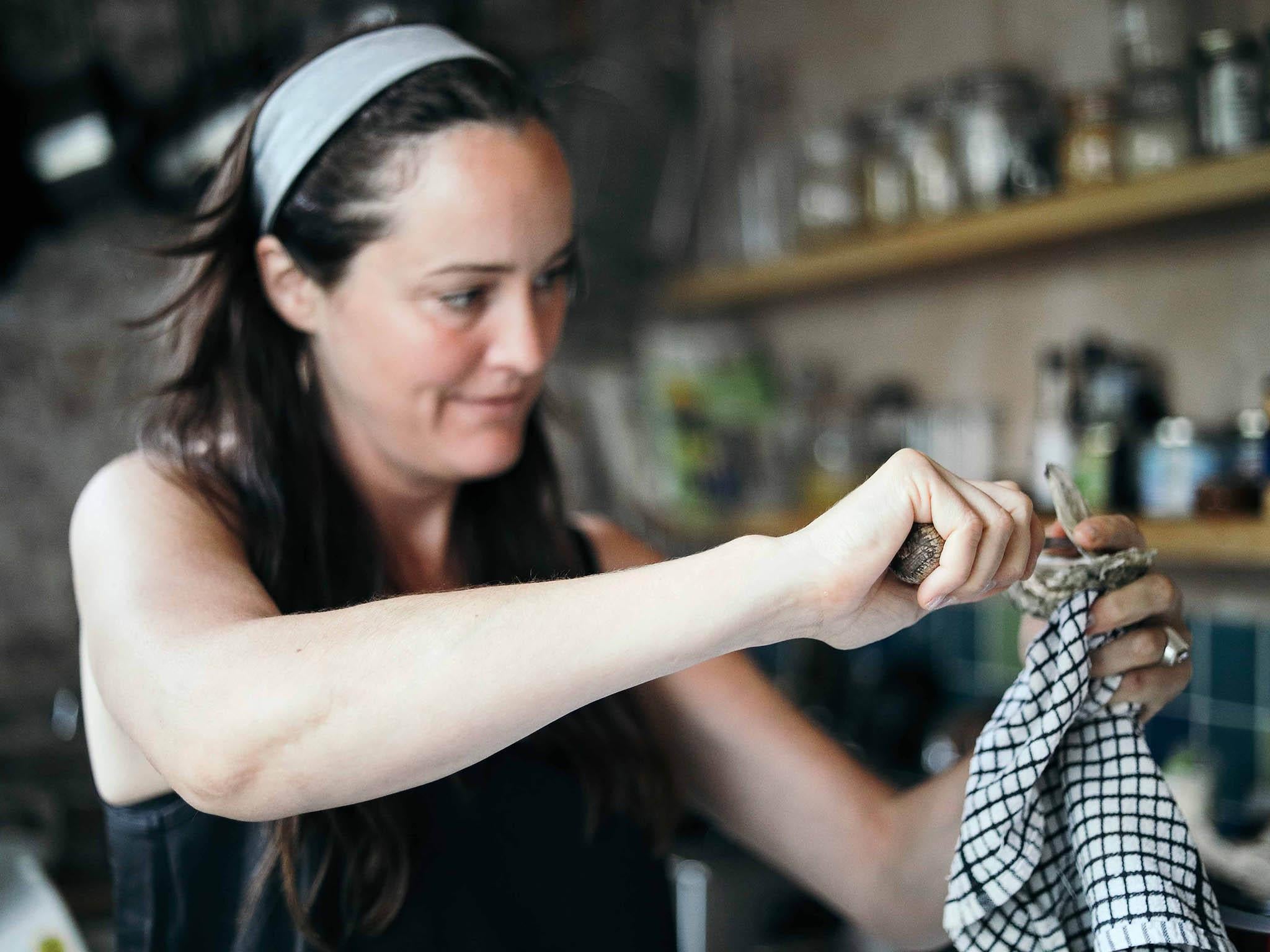How oysters regained their title of the king of seafood
Once they were the food of the Dickensian poor. But thanks to an oyster renaissance they’re recognised as a sustainable and nutritional food source. Just make sure you chew it

“Don’t say it, don’t say the ‘S’ word to describe them,” pleads Katy Davidson. I’d asked her how she tries to make oysters more appealing to people who only see them as one thing: snot – sorry Katy.
Also known as the “Oyster Lady”, Davidson has spent the past 12 years bringing oysters back to our plates and changing our preconceived (incorrect) conceptions of them.
Oysters, unfortunately, have a reputation for being slimy, slippery, salty and a hard to eat food. But they’re one of the most sustainable things to eat, and certainly the most sustainable to come from the sea.
“They’re having a renaissance,” Davidson says.
And they are. No longer are they confined to high-end restaurants, only for those who can afford them. They’ve been transformed into a beautiful accessible dish that’s as Instagrammable as it is edible.
But it wasn’t always this way. Go back 100 years and oysters were used as a cheap alternative to meats.
Nowadays, cooking with oysters has been all but forgotten. Much like pie and eel shops, they were once a favourable stalwart of the community. But today, you’ll be hard-pressed to find anywhere that serves them hot.
Oysters were once a poor man’s food; a cheap source of protein most likely to be found in a beef pie. Using large oysters to substitute beef in a pie was a Victorian classic, but seems like culinary blasphemy now.
But as the character Sam Weller says in Dickens’ Pickwick Papers: “Poverty and oysters always seem to go together.”
And he was right. In the 19th century, oysters were sold on the streets – perhaps Britain’s first version of street food – where passersby snacked on them and public house goers bought them with a hefty pint of stout – another cheap alternative of “sustenance”.
The home of the oyster in the capital was Billingsgate Market, where an estimated 80 million bivalves were imported from Whitstable each year. That led to the depletion of stocks at the end of the 19th century and the end of the once huge oyster trade.
And that’s how these once-cheap bivalves managed to climb the slippery pole and reinvent themselves as a sophisticated foodstuff: overfishing and the overconsumption of guzzling Victorians.
But here we are again: the molluscs are back in vogue and more importantly recognised as a sustainable food source.
“But what most people don’t know is that they’re eating them wrong,” says Davidson. Deciding to open wide and throw back in one is absolutely not the correct way to eat an oyster.
“Think of them like a fine wine,” she says. “You’d never knock that back in one, you want to take your time. And oyster producers, like any food producer who has taken years to refine their product, do not want you to just swallow it without properly tasting it.”
Instead, if eating an oyster from a half shell you should first sip the “liquor” – the mixture of sea water and oyster juice. This gets your palate working, according to Davidson, and then you can give it a little chew and take in those flavours, ranging from nutty to rich butteryness and even a gamey flavour.
“The only way I can think that people think this is the right way to eat them is when they were sold from barrels on the side of the road as a cheap source of protein, and as there weren’t any fridges, they probably didn’t taste great, so that was the easiest way to eat them,” she says.
Another driving force behind bringing the humble oyster back to life has been the Wright Brothers restaurants, a now five-strong mini chain spread out across London, with its heart in its first restaurant in Borough Market. The brother-in-law duo changed careers after meeting a Frenchman called Jerome, whose oysters were the best they’d ever eaten.
Even then, in 2002, oysters were still considered a delicacy in the finest of restaurants. But to the brothers, it wasn’t apparent why they shouldn’t be available to everyone and so they revived an old oyster farm in Cornwall, and then their first restaurant in 2005.
Robin Hancock, co-founder and one half of the Wright Brothers, says: “There is a myriad of other factors that contributed to them: a number of freezing winters, the world wars, TBT (anti-fouling paint) and a disease that affected the native oyster population.
“We started to change the perception of oysters being a luxury item for the few and to get everyone eating oysters. We now supply over five tons of oysters a week to the London market and the popularity is growing by 10 per cent year on year.”
Traditionalist’s will be pleased to see oysters served at their restaurants with lemon, Tabasco or shallot vinegar, while more modern ways include poached, grilled or deep fried.
Just remember to chew. Once you do, you’ll never look back.
London Oyster Week runs from today until 29 April. For more information on events visit londonoysterweek.co.uk
Subscribe to Independent Premium to bookmark this article
Want to bookmark your favourite articles and stories to read or reference later? Start your Independent Premium subscription today.

Join our commenting forum
Join thought-provoking conversations, follow other Independent readers and see their replies